Cold brew coffee is taking over the nation, popping up in coffee shops and stores large and small. This slowed-down, relaxed version of hot coffee yields an incredibly smooth, more palatable and well-rounded tasting coffee that appeals to coffee lovers and non-coffee drinkers alike. It’s no surprise why it’s taking over!
Enjoy the slowed-down, relaxed version of hot #coffee at home in just a few simple steps! #coldbrew #coffeetime #saslife Click To TweetWhat is Cold Brew?
Cold brew coffee is essentially a preparation method. It refers to the process of steeping coffee grounds in room temperature or cold water for an extended period of time (at least 8-12 hours, but ideally 12-16 hours).
The slow infusion extracts the great coffee flavors from the beans (and the caffeine too, don’t worry!) while leaving behind most of the compounds that can make coffee bitter and acidic. The resulting smoother, sweeter product eliminates the need for added sugar, sweeteners and flavored creamers that many iced and conventionally brewed coffees require.
Cold Brew vs. Iced Coffee
Many people assume cold brew and iced coffee are the same thing, but there is a huge difference between letting hot coffee cool and cold-brewing it!
- No Heat: Temperature is the primary difference between cold brew and iced coffee. Cold brew is never heated while iced coffee is normal coffee that’s then cooled down.
- Lower Acidity: Cold brew is up to 67% less acidic than an average cup of hot joe because the coffee grounds aren’t exposed to the intense heat of boiling water. This makes the chemical profile of the finished product different than conventionally brewed or drip coffee. The lower acidity is what creates the smoother, sweeter appeal of cold brew. Also, rapidly cooling hot coffee creates a slightly bitter taste (which is why most iced coffee drinks are loaded with sugar and cream).
- No More Dilution Problems: Iced coffee is cooled rapidly by pouring hot coffee over ice. This sudden change in temperature can alter the flavors of the coffee while leaving you with a watered down, diluted drink (which is just sad!). Cold brew allows you to be in control of the dilution and since it’s already cold or at room temperature, adding ice and/or water is totally up to you and won’t negatively impact the flavor or concentration.
- Longer Shelf-life: Regular coffee tastes best as soon as it’s made while cold brew stays fresh for 10-14 days when refrigerated.
How do you make cold brew coffee?
Stop spending $4 per cup at your local coffee shop and try cold-brewing coffee at home. While it does take more time upfront, it will save you time (and money!) in the long run. The best part is you don't need a bunch of fancy equipment! All you need is good quality coffee, water, a glass jar, a strainer and a little bit of patience. See for yourself!
1. Start with coarsely ground coffee in a glass jar or pitcher.
2. Add water and stir. (see note below about proper coffee to water ratios)
3. Seal and let sit at room temperature for 8-12+ hours (ideally 12-16 hours).
4. Strain. (see tip below!)
5. Dilute with water to reach desired strength.
6. Add milk or cream, if desired.
7. Store in fridge for 10-14 days.
Coffee to Water Ratio
The amount of water used will vary depending on how strong you like your coffee and if you prefer a concentrate or ready-to-drink product. Start with 1 cup of coffee steeped in 4 cups of water and adjust up or down from there. This will result in a coffee concentrate that you can then mix with water, milk and/or ice to get the perfect blend. If you’re looking for a balanced preparation, try a 1:8 ratio.
Straining Tip
Line a fine mesh sieve with a coffee filter or cheesecloth for a smooth finished product. This doubled up filtration system should prevent needing a second strain to remove any fine particles. If you don't have a coffee filter or cheesecloth on hand, no worries, just run coffee through a second strain to remove any remaining fine particles.
Now that you have the steps down, try making a large batch on the weekends to last for the week ahead. Start the process Saturday night and strain it Sunday morning or start it first thing Sunday morning and strain it that night just before bed. It’s so nice to not worry with grinding coffee or remembering to turn on the coffee pot in the wee hours of busy mornings while rushing to get out the door! I even take the extra step to prep my cold brew the night before with the perfect blend of water and milk and then grab and go the next morning.
Note: If you’re sensitive to caffeine, jonesing for coffee later in the day or just trying to cut back, decaf is a great option!
How do you serve cold brew coffee?
You can enjoy cold brew coffee iced cold or piping hot, your choice! Whichever way you choose, follow the same steps above and then either serve it over ice or warm it up in the microwave. Milk and/or cream are optional as well. And thanks to the smooth, less acidic taste of cold brew, sweeteners and added sugars shouldn't be needed!
Tips for Success
Ready to give cold brew coffee a try? Follow these tips to ensure you have a successful, enjoyable experience!
- Quality matters! As with many things in life, you often get what you pay for. Opt for organic, fair trade coffee whenever possible. The better the quality, the better the flavor!
- Use coarsely ground coffee. The size of the grind impacts how much flavor is extracted. For cold brew, it’s best to use the coarsest grind possible. Fine, sandy ground coffee like you would use for drip coffee can result in over-extracted, gritty and muddy coffee. Aim for a coarse cornmeal texture with pieces of some beans still intact. If you use pre-ground coffee, you won’t need to steep it as long and you may need to strain it twice.
- Be patient! You need to allow enough time for the cold water to extract the flavors and oils from the coffee grounds. Don’t try and rush the process or it won’t turn out as good. Allow 12-16 hours to get the best flavor. You can cut this time a little short, but don’t be too impatient and allow at least 8 hours of steeping. Cold brew coffee is like wine and gets better with age, but there is a point of diminishing return. Steeping for 12-16 hours is great, but anything longer can cause the coffee to start to become bitter and acidic.
- Adjust the concentration. Tweak the water to bean ratio until you find the perfect balance. The amount of water used significantly influences the strength of your coffee. If you want to make a concentrate, use less water and then dilute with water and/or milk or cream. If you prefer a light coffee drink, use more water and enjoy as is or add a splash of milk or cream.
Resources:
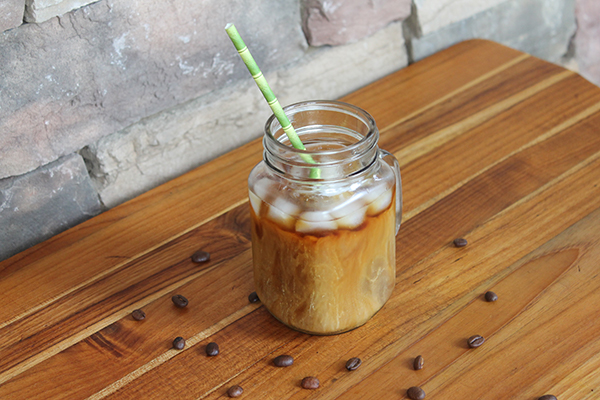

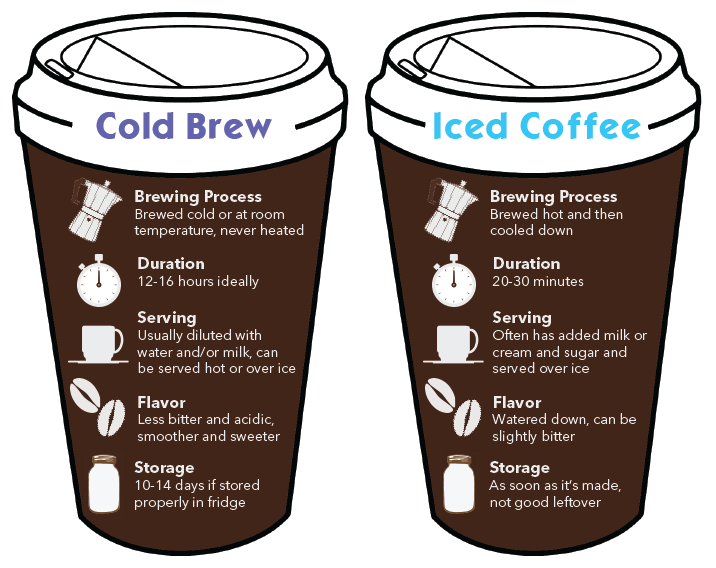
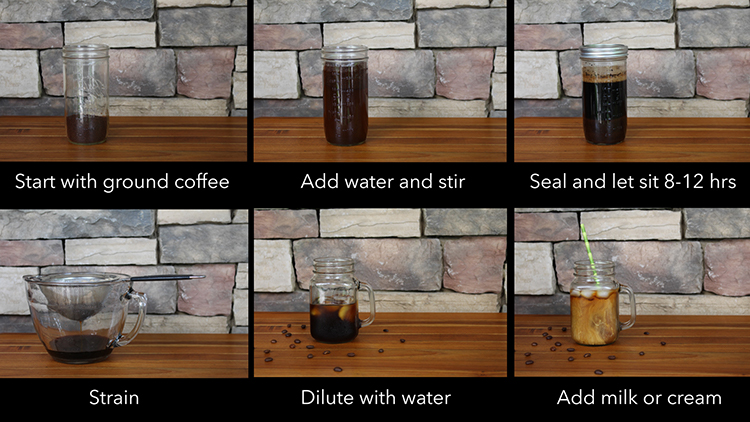
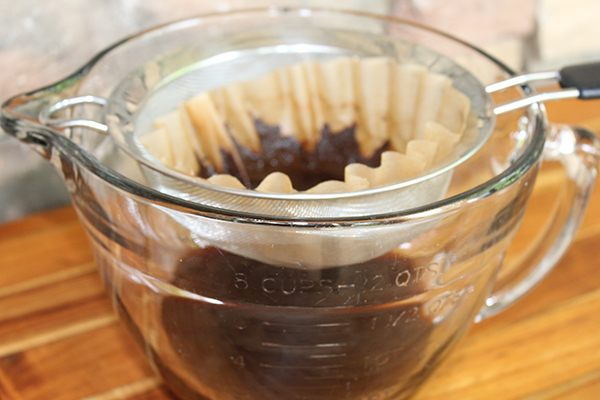
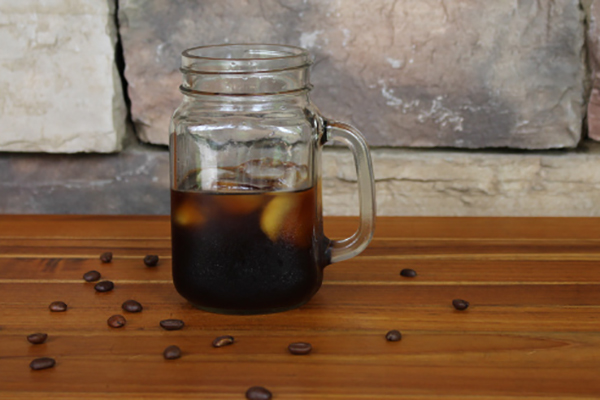

4 Comments
Great post! Also, if you'd still like to "ice" your cold brew, consider freezing coffee in an ice cube tray to make coffee "ice cubes." Then as it melts, the flavor is enhanced instead of diluted. Particularly helpful if you're a slow sipper. 🙂
Yes, great tip!!
Thank you both. Cannot wait to try both the cold brew and the cubes!
i have tried it, it's great and won't taste watered down.